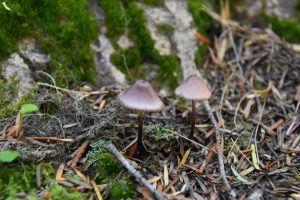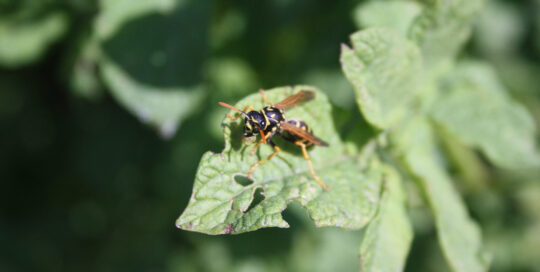Fungi: The Types that may Exist in your Backyard
Views: 1148

With a wet spring continuing into the summer throughout much of the country this year, there’s no doubt mushrooms are abundant in many lawns and gardens. But do these prolific fungi harm the grass or have any negative affects on the flowers or vegetables? In short, no.
What mushrooms do for everyone
Mushrooms are part of an intricate and important network far beyond our view. It intertwines with vascular plants, often benefiting both entities. On one hand, they are the clean up crew in the landscape spring up from decaying matter, whether it’s a tree stump in the backyard or the mulch in your garden, breaking down the cellulose or lignin within the wood. As the fungi sends out hyphae into the wood, it releases enzymes. These allow it to utilize the nutrients within the log or other decomposing materials. The mycelium that stretches throughout the wood looks like tiny white threads stretching in all directions through the wood bringing in the nutrients to the fungi.
With these qualities, fungi can be beneficial aiding in the decomposition of mulch. This ultimately adds nutrients to the soil. It also turns old trees into water-holding dynamos in the forest and landscape. For those who live in fire prone areas, keep in mind that an old log sitting on the ground is often saturated to the point that it does not readily burn. It makes you think about what is really the best way to fire proof your landscape.
Unseen connections
Fungi also have a relationship with the trees and plants in our yards that we don’t ever see. There are a number of plants, orchids being one of the most noted, that cannot survive without their fungal partners. Over 90 percent of trees are connected with the mycorrhizal network sharing sugars and water in exchange for other nutrients they cannot reach with their roots.
It’s also a means of communication between these entities connecting the root systems between species. In one study, the researcher used stands of Douglas fir and birch. By injecting the trees (and ultimately the fungal network) with radioactive isotopes she could see where nutrients went and why. For example, when the firs were shaded in the summer, the birch trees sent over carbon to the firs. The process reversed later in the season when the firs were still photosynthesizing, but the birch had already lost their leaves. While this particular study was conducted on trees, researchers are learning similar interactions between plants in all sorts of ecosystems.
Fairy rings in the lawn
When mushrooms, including the “fairy rings” that are the center of many children’s stories, sprout in the lawn, it’s actually a good sign that there is higher quality soil and decent organic matter. Although those with the textbook lawn might not like their appearance, keep in mind that they are temporary. Many of the fruiting bodies of fungi, which is what mushrooms are, only last for a day or two. Some cycle within mere hours. Leave them, if possible, although there is one caveat. If there are young children present, you might want to physically remove them, or at least keep the child away from them. The “little brown mushrooms,” as so many of these are called, do have toxic properties, particularly for small bodies.
If you have mushrooms popping up in your lawn and garden this year, consider it a good thing. And if you can, take a moment in between weeding and the seemingly endless tasks to hunker down to take a good look at these tiny powerhouses of decomposition. We’ll never see everything that is happening underneath the soil, but it’s amazing to catch a glimpse of this intricate system.
Meet Amy Grisak
Amy is a freelance author and photographer in Great Falls, MT who specializes in gardening, foods, and sustainable agriculture. She provides information on every kind…
Amy's Recent Posts

Looking into the Crystal Ball for a Pest Report








